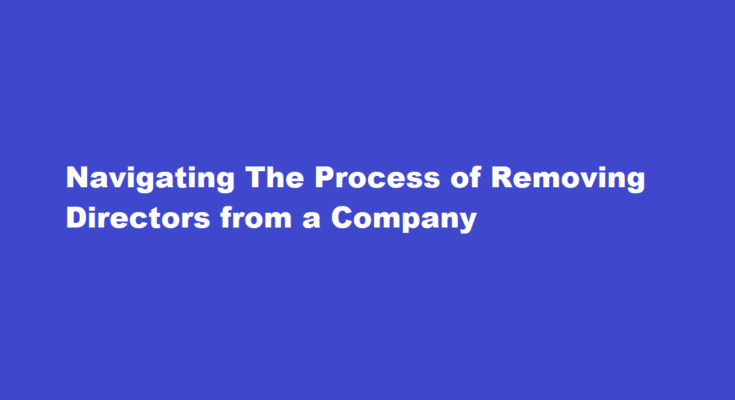Introduction
The composition of a company’s board of directors plays a crucial role in shaping its direction and success. However, situations may arise where the removal of a director becomes necessary due to various reasons such as poor performance, conflicts of interest, or strategic realignment. In this article, we will delve into the steps involved in removing directors from a company while adhering to legal and ethical considerations.
Review Company’s Articles of Association
Before initiating the process of removing a director, it’s essential to carefully review the company’s Articles of Association – a legal document that outlines the company’s internal rules and regulations. This document often contains provisions related to the appointment and removal of directors. It might specify the required majority for such decisions and the procedures to follow. Adhering to these provisions is vital to ensure that the removal process is valid and legally sound.
Conduct a Board Meeting
A board meeting should be convened, following the protocols outlined in the Articles of Association. During this meeting, the reasons for the proposed removal should be presented, along with any evidence supporting the decision. It’s crucial to maintain a transparent and professional demeanour throughout the proceedings. Depending on the company’s regulations, a resolution for the removal of the director may need to be passed by a certain majority vote.
Provide Notice and Explanation
Directors have the right to a fair and reasonable process. Before the board meeting, the director in question should be provided with written notice of the intent to discuss their removal. This notice should include the reasons for the proposed removal and any supporting documentation. This step not only ensures transparency but also allows the director to present their case or response during the meeting.
Shareholder Approval
If the company’s Articles of Association require shareholder approval for director removal, a general meeting of shareholders might need to be held. The proposed resolution should be included in the meeting’s agenda, and shareholders should be provided with adequate information regarding the reasons for the removal. Shareholders can then vote on the resolution, typically requiring a specified majority for approval.
Statutory Compliance
Compliance with legal requirements is paramount when removing directors. Depending on the jurisdiction and the company’s structure, there might be specific legal procedures to follow. Companies must adhere to relevant company laws and regulations to prevent any legal challenges to the removal process.
Inform Regulatory Bodies
In some cases, regulatory bodies or government agencies might need to be notified about the change in the board of directors. This is particularly true for publicly traded companies. Timely and accurate reporting ensures that the company remains in good standing and avoids potential fines or penalties.
Smooth Transition
After the successful removal of a director, the company should focus on a smooth transition. This involves updating official records to reflect the change, informing relevant parties, and ensuring that the outgoing director’s responsibilities are transferred seamlessly to others.
FREQUENTLY ASKED QUESTIONS
Who has the power to remove the director of a company?
As per section 169 of the Companies Act’ 2013, The shareholders have the power to remove a director of the company by passing an ordinary resolution. If the director to be removed is an independent director, then a special resolution is needed to remove the director.
Can a director be removed immediately?
Under article 18 of the model articles, a person will stop being a director immediately if: they resign. a majority of the company shareholders or members vote them out. they’re stopped from being a director by a court or in law.
Conclusion
Removing a director from a company is a multifaceted process that demands careful adherence to legal protocols, ethical considerations, and transparency. By following the company’s Articles of Association, conducting fair board meetings, and ensuring compliance with applicable laws, a company can navigate the director removal process effectively while preserving its reputation and stability.
Read Also : Unlocking The Mysteries of the Common Seal A Comprehensive Guide



